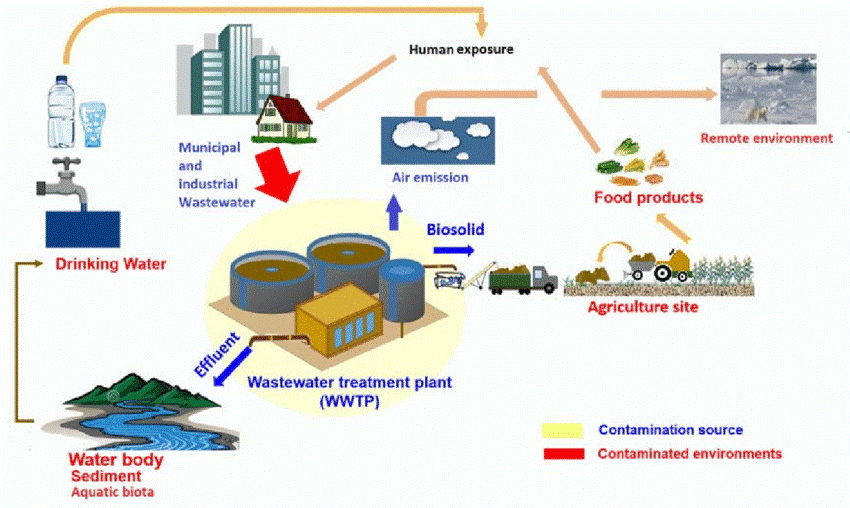PFAS Treatment in Drinking Water
PFAS Treatment in Drinking Water
Blog Article
Just How PFAS Therapy Guarantees Tidy and Lasting Water
The existence of PFAS, frequently understood as "permanently chemicals," presents considerable difficulties to water quality and public health. The implications of these therapies expand past prompt wellness advantages; they increase important concerns concerning long-lasting water administration approaches that have to be resolved to make certain a durable future.

Comprehending PFAS Contamination
PFAS, or per- and polyfluoroalkyl compounds, have actually become a considerable environmental worry as a result of their extensive frequency and determination in the atmosphere. These artificial chemicals have actually been used in different commercial applications and customer items, consisting of non-stick cooking equipment, water resistant garments, and food product packaging, as a result of their unique buildings such as water and oil resistance.
The contamination of dirt and water resources by PFAS takes place largely via commercial discharges, firefighting foam use, and leaching from land fills. pfas management. As soon as launched, these substances are immune to destruction, leading to their accumulation in the environment. This persistence raises vital problems, as PFAS can travel fars away with groundwater and surface water supply, influencing alcohol consumption water materials and ecological communities

Health And Wellness Dangers of PFAS
The determination of PFAS in the atmosphere elevates considerable health concerns for people subjected to these materials. Research study has actually linked PFAS direct exposure to different adverse health and wellness effects, consisting of immune system dysfunction, liver damages, and enhanced threat of certain cancers cells.
The ubiquity of PFAS in customer items, such as non-stick kitchenware, water-repellent fabrics, and food product packaging, further magnifies the risk of exposure. Consuming alcohol water contaminated with PFAS is a significant problem, as these chemicals can leach right into groundwater sources. At risk populations, consisting of children and those living near industrial websites, may face elevated dangers as a result of their establishing systems and possible for higher exposure levels.
As recognition of these health and wellness threats continues to grow, regulative firms are starting to establish guidelines for PFAS levels in drinking water. Public health efforts are vital to alleviate exposure and secure areas from the long-lasting impacts of these hazardous compounds.

Cutting-edge Therapy Technologies
Exactly how can we properly take on the difficulties presented by PFAS contamination in water sources? Cutting-edge treatment innovations are becoming important options in the mission for clean water. These methods concentrate on the removal or damage of per- and polyfluoroalkyl substances (PFAS), which are notorious for their persistence in the setting.
One promising strategy is adsorption making use of advanced materials, such as turned on carbon and ion exchange resins. These materials have shown effectiveness in catching PFAS molecules from water. One more noteworthy modern technology is membrane purification, which makes use of nanofiltration and turn around osmosis to separate pollutants at the molecular degree, therefore supplying an obstacle versus PFAS.
In addition, advanced oxidation processes (AOPs) use solid oxidants to damage down PFAS compounds into harmless by-products. that site This approach is especially efficient for dealing with very polluted water sources. Bioremediation methods, employing certain microbes, are additionally being checked out to weaken PFAS.
As study proceeds, crossbreed systems that incorporate numerous modern technologies may use boosted performance, addressing the intricacies of PFAS contamination. The development and implementation of these cutting-edge therapy innovations are important steps toward making certain the click reference safety and security and sustainability of our water resources.
Benefits of Effective PFAS Treatment
Effectively dealing with PFAS contamination in water resources considerably boosts public health and ecological safety and security. PFAS, usually referred to as "permanently chemicals," are immune to deterioration and can gather in the body, leading to serious health and wellness dangers such as cancer, liver damages, and immune system dysfunction. By carrying out reliable therapy methods, communities can decrease exposure to these dangerous materials, inevitably enhancing the health outcomes of their populaces.
Additionally, effective PFAS treatment contributes to the preservation of regional environments. Polluted water can detrimentally influence aquatic life and disrupt the delicate balance of neighborhood environments. By ensuring clean water, therapy processes secure biodiversity and preserve eco-friendly stability.
In addition, efficient PFAS remediation can cultivate public self-confidence in water high quality. When areas are guaranteed that their drinking water is complimentary from damaging pollutants, it advertises a feeling of safety and wellness. This trust fund is vital for area engagement and support for continuous water management efforts.
Future of Water Sustainability
In the middle of growing problems concerning water high quality and deficiency, the future of water sustainability depends upon cutting-edge methods and collective initiatives. As communities face the impending risks of impurities like PFAS, the growth of innovative treatment technologies is essential. These innovations not only concentrate on the elimination of dangerous materials yet additionally promote the reuse and recycling of water, therefore decreasing total demand.
Furthermore, effective water administration plays an essential function in making sure sustainable techniques. Policymakers need to integrate clinical research study with governing frameworks to develop clear guidelines for water usage and therapy. Stakeholder interaction, including local communities and industries, fosters a sense of common duty and motivates sustainable techniques across various sectors.
Investment in facilities is additionally crucial; upgrading aging systems to include modern purification and purification methods can considerably boost water top quality. Accepting green modern technologies, such as natural filtering their explanation systems, can give environmentally friendly remedies.
Ultimately, the future of water sustainability hinges on an all natural method that incorporates technology, policy, and area involvement. By prioritizing these aspects, we can secure our water resources for generations to come, ensuring clean and lasting water for all.
Final Thought
In verdict, the reliable treatment of PFAS is essential for ensuring clean and lasting water. Eventually, durable PFAS treatment methods contribute to long-term resilience in water administration, fostering public trust in water quality and promoting lasting methods.
Report this page